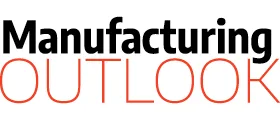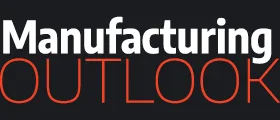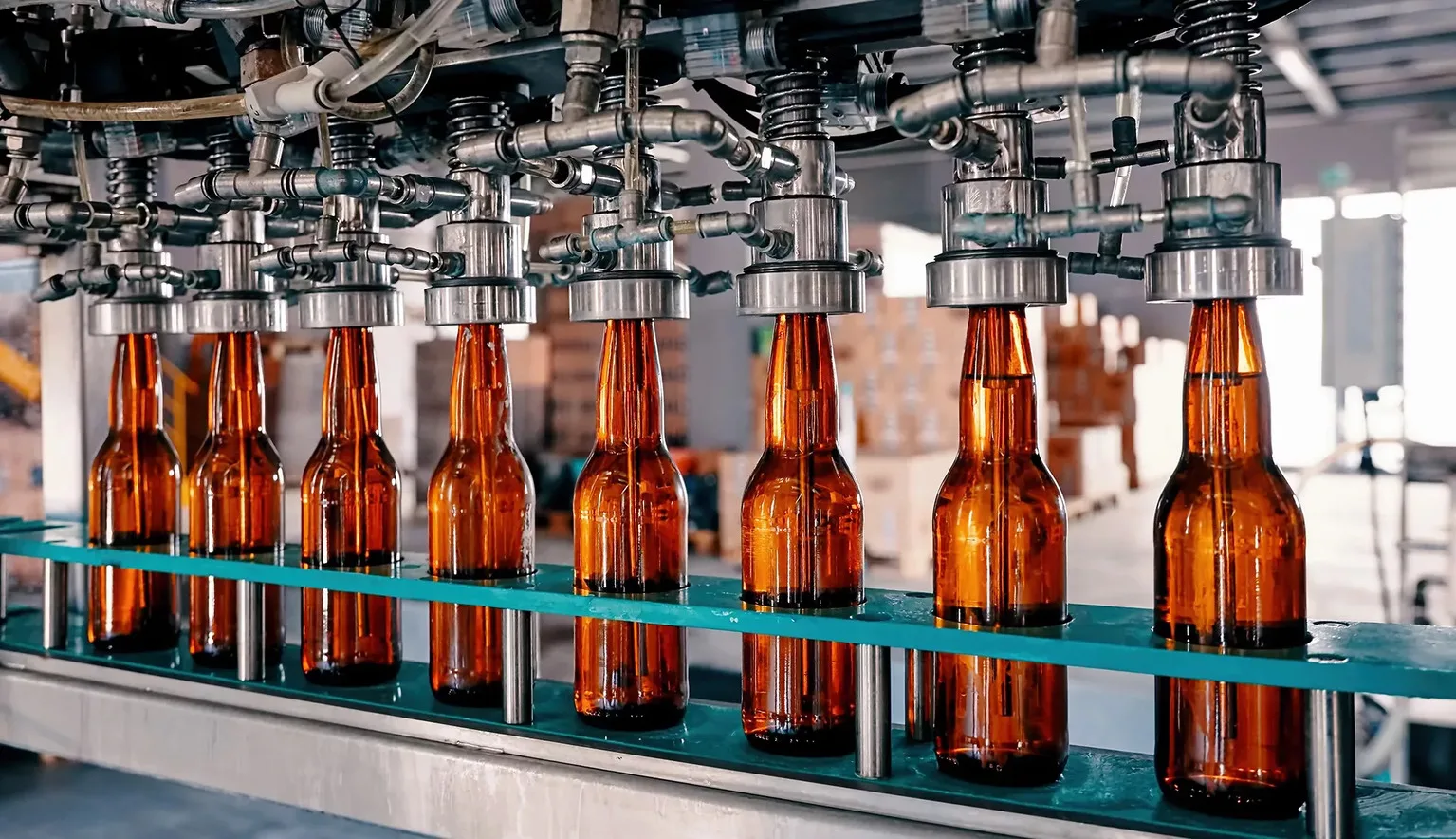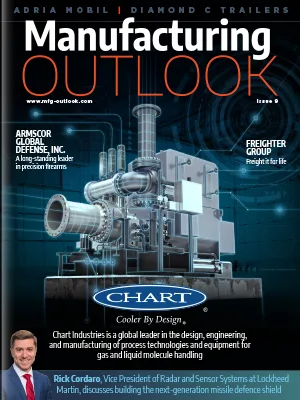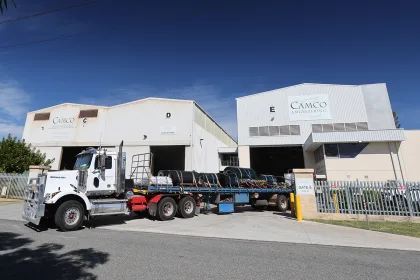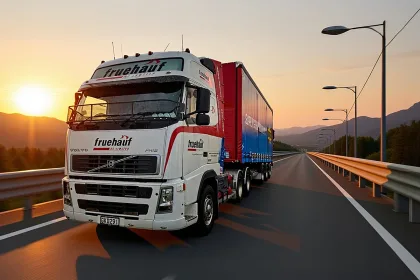Kenya Association of Manufacturers (KAM) was established in 1959 as a representative of manufacturing and value-add industries in Kenya. We spoke to Mr Mucai Kunyiha, Chairman, to find out more.
INTRODUCTION
The government and private stakeholders in Kenya are working hard to create a manufacturing sector that drives economic development and wealth creation.
Kenya is considered the economic and financial hub of East Africa, with a robust and diverse economy based on tourism offerings, agriculture, forestry, mining and more.
Historically, the manufacturing centre has stagnated at around 10 percent of GDP, dipping to 7.7 percent in 2018. However, the government and private organisations (large and small) are aware of the manufacturing sector’s role in making Kenya an industrialised and competitive economy.
This renewed interest has resulted in plans and policies such as the Big Four Agenda, which seeks to increase the manufacturing sector’s percentage of overall GDP contribution to 15 percent by 2022.
SUBSECTORS
Kenya’s manufacturing industry is diverse, comprising a variety of different sub-sectors such as automotive, metal and plastics. It also consists of both large businesses and SMEs, both of which have a part to play in economic development.
Food and beverage is the largest manufacturing subsector, which includes businesses manufacturing cocoa and confectionary from beans; dairies producing butter and milk; and distilleries and breweries manufacturing alcoholic beverages. Kenyan beer production has an annual turnover of $280 million, making it a significant contributor to the economy.
Other subsectors include apparel and textiles, including those that are handwoven and stitched. According to the CEO of the Export Promotion Council, Peter Biwott, there is an increased appetite for authentic Kenyan handicrafts.
“If you look at the export strategy, we have identified these items as having a huge impact on the country’s GDP since that is what many of our tourists are looking for,” he says.
This suggests that SMEs within the textiles industry and beyond have a key part to play in economic development.
KENYA’S MANUFACTURING PRIORITY AGENDA
Kenya’s Vision 2030 is to make Kenya a “middle income country providing high quality life for all its citizens by the year 2030”. It is shaped by President Uhuru Kenyatta’s Big Four agenda – food security, manufacturing, affordable housing and healthcare.
One aspect of this vision is the “Buy Kenya Build Kenya Policy” – to increase competitiveness and consumption of locally produced goods and services. However, although the government have taken steps to enforce it, KAM is calling for greater interventions.
These include supporting SME development through the provision of affordable credit; increasing the resilience of the manufacturing sector by ensuring long-term policy stability; improving the ease of doing business and development of regional value chains to minimise exposure from external shocks and much more.
In line with Vision 2030, KAM created its Manufacturing Priority Agenda 2020 – “Establishing a competitive manufacturing-led economy for job and wealth creation”. It consists of five pillars, such as ‘government-driven SMEs development’ – which aims to enhance market and financial access for SMEs – and ‘competitiveness and level playing field’, which promotes access to reliable, affordable long-term energy, reduces logistics costs and provides an enhanced cashflow to manufacturers through addressing fees and levies, alongside incentivising prompt payments.
FACTS & FIGURES
- Type of industry: Primary
- Sub-sectors: Automotive, metal, F&B, textiles, pharmaceutical
- Percentage of GDP: 7.7 percent (2018)
- Annual growth rate: 4.2 percent (2018)
- Number employed: 299,620 (2018)
Q&A WITH THE KENYA ASSOCIATION OF MANUFACTURERS
Associations play a vital role in representing the interests of their members at an industry and national level. We asked Phyllis Wakiaga of the Kenya Association of Manufacturers to find out more about the current state of the sector and what it is doing to advance its agendas.
Kenya Association of Manufacturers (KAM) was established in 1959 as a representative of manufacturing and value-add industries in Kenya. Its mission: to promote competitive and sustainable local manufacturing.
It uses fact-based advocacy to collaborate with governmental agencies in ensuring a flourishing manufacturing sector, with the goal of achieving a double-digit contribution to GDP.
We spoke to Mr Mucai Kunyiha, Chairman of KAM, to find out more.
Since inception, how has KAM developed and progressed in terms of its key objectives?
Mucai Kunyiha (MK): Since its establishment in 1959, KAM has evolved into a dynamic, vibrant, credible and respected business association that unites industrialists and offers a common voice for businesses and SMEs. We have also built a sustainable organisation through membership growth, and our very own building opened in December 2014.
We have expanded our regional presence. This has played a key role in enhancing our advocacy work at county level. Through our advocacy, we have seen business grow and expand. Some of our advocacy issues include: ‘Buy Kenya Build Kenya’; fighting against illicit trade; access to affordable and reliable energy; infrastructural development such as roads and water.
This year, we have seen local manufacturers big and small step up to support the country in the fight against COVID-19 and to keep Kenya moving. They have produced essential items, such as hand sanitiser and personal protective equipment including full body suits, masks and gloves to be used by medical personnel. Our automotive sector, led by Mutsimoto Company Limited, also developed the first ever locally manufactured ventilator, which was recently certified by the government.
What do you find most exciting about the manufacturing industry in Kenya?
MK: The local manufacturing sector is diverse, with 14 sectors located all over the country. It is exciting to witness first-hand the impact manufacturers make on the societies in which they operate, and nationally it is mind-blowing. They are a key engine for job and wealth creation as well as the economic sustainability of the country.
The technological advancements used to manufacture some products also makes the sector exciting; for example, a machine that produces a lot of goods in a very short time to meet market demand. Recently, we visited one of our members, who is the power behind most major brands in the hospitality sector. The manufacturer produces kitchen and laundry equipment, and is also a cold-room solution provider, offering innovative products and services from concept development, designing, sourcing, fabrication and installation to after-sales service.
On the flip side, what are its biggest challenges?
MK: We hope to contribute 15 percent to the GDP by 2022, as outlined in the Big Four Agenda. However, we are hindered by challenges such as the quality of power, difficulties in accessing finances, unpredictable policies and regulatory environment, shortage of an adequately skilled workforce, market access in the region, illicit trade which eats into local manufacturers’ market share, an influx of cheap goods, taxation and county licenses and fees which hinders trade in and among counties.
We are consistently engaging government to resolve these challenges, in order to achieve our development goals as a country for job and wealth creation.
Can you talk a little more about Kenya’s sustainable development goals and how KAM aims to work towards them?
MK: SDGs are universally accepted, most importantly because they create opportunities for different industries to create shared value. In the manufacturing sector, for instance, we do see the coming together of market potential, societal demands and policy action. It is therefore critical for all stakeholders, the private and public sector alike, to unite and fast-track the realisation of the SDGs before we run out of time. This has seen us rally our members and the wider private sector to embrace and integrate sustainability within their business strategies and operations.
We at KAM resonate with the 14 sectors of manufacturing under our membership whose role is crucial in the implementation of the SDGs.
While real progress has been made by the business community, action to meet the SDGs is not advancing at the speed or scale required. Furthermore, the current pandemic has impacted on the implementation of SDGs. For example, it has reversed gains made in SDG 3 on good health, achieving clean water and sanitation targets (SDG 6), weak economic growth and the absence of decent work (SDG 8), pervasive inequalities (SDG 10), and above all, entrenched poverty (SDG 1) and food insecurity (SDG 2).
At the moment we need goodwill and commitment from all stakeholders – private sector and government – to achieve these goals. We must focus on addressing underlying factors through the SDGs, even as we seek to overcome COVID-19.
Now is the time to embrace new innovative ideas to fast track our progress in realising SDGs. However, this must be hinged on robust institutional frameworks with distinct, yet complementary roles, responsibilities and accountability measures.
At the beginning of the year, KAM, the Office of the Deputy President and Global Compact Network Kenya carried out a study to understand Kenya’s SDGs readiness from a policy, legislative and institutional perspective. The report provides a legislative review of Kenyan Laws to identify areas that need to be reformed to align with the SDG commitments. It has also identified gaps in the laws and policies across the 17 goals, with an emphasis on how the country can achieve green economic growth.
The recommendations in the SDG Readiness Report seek to support enabling legislation targeting specific SDGs and sub-goals. They include consolidation and integration of institutional framework through creation of a multi-sectoral agency that coordinates all the institutions dealing with SDGs; integration of the SDGs within the constitutional, legislative and regulatory frameworks; and involvement of the counties in the implementation of the SDGs.
How has COVID-19 affected the manufacturing industry?
MK: Earlier this year, in partnership with KPMG, we launched a report on the impact of COVID-19 on the manufacturing sector in Kenya. The survey sought to highlight: challenges facing manufacturers in the midst of COVID-19, and how they are adapting to these changes; manufacturers’ perception on the economic measures put in place by the government in response to COVID-19’s effect on the economy; and proposals to address these challenges.
The report revealed some upsetting statistics. For example, 91 percent of non-essential goods manufacturers have seen a significant fall in demand, compared to 74 percent of essential goods manufacturers. Manufacturers’ top priorities are reducing costs (78 percent), job retention (61 percent), and improving cashflows (53 percent). However, 40 percent of manufacturers have had to reduce their casual workforce, with 73 percent retaining their permanent employees.
We were pleased to see that more than 90 percent of manufacturers have adhered to guidelines put in place to curb the spread of the virus such as sanitisation points, social distancing and providing PPE equipment. In terms of economic incentives, 71 percent of manufacturers indicated that zero tax on income less than Kshs 24,000 ($220 USD) was most helpful while reducing the VAT to 14 percent was least helpful.
Have you got any projects in the pipeline you wish to highlight?
MK: Our focus now is to build resilience in industries, which the pandemic pointed us to. Kenya can forge the resilience of local industries by enhancing our local value chain, from raw materials to finished products. By doing so, we can shelter the manufacturing sector from industrial and trade risks arising out of external shocks. This way, Kenya can source raw materials and intermediate products locally, before turning to international markets.
We can also build resilient industries by supporting Kenyan-made products through public procurement, creating awareness on locally manufactured products and encouraging consumers to buy local.
Predictable and stable policy initiatives are also critical. This entails succinct fiscal and regulatory policies and initiatives that encourage investments into the sector. Increased investments will see local industry thrive and in turn create jobs and wealth for many.
Are you optimistic about the future of the manufacturing industry?
MK: We have identified 76 opportunities for investment and value addition through our Manufacturing Resilience and Sustainability Strategy: A Sector Deep Dive Report. Among them, the manufacture and supply of medical equipment, investments in adopting new technology, increased attention to developing local value chains to reduce dependence on imports, circular value chain, agro-processing, regional leather value chain integration and packaging materials.
We are keen to see manufacturers take up these opportunities. As such, we shall continue engaging manufacturers to understand the bottlenecks hampering their uptake.
Furthermore, we will continue to engage the government on the overarching interventions needed to aid in the recovery of the manufacturing sector and economy, as businesses try to navigate different challenges brought about by the pandemic.
CURRENT TRENDS AND INNOVATIONS
Kenyan manufacturers need to embrace robotics, AI and machine learning to remain competitive.
Many of the current trends within Kenya’s manufacturing industry have arisen from the need to survive the effects of COVID-19.
Local industries had to strategize and implement immediate actions to ensure business continuity and ensure the safety of their employees at the workplace, focusing on strategic initiatives to accelerate preparations for recovery and increasing their resilience.
According to KAM, local manufacturers have had to tailor production and supply systems to meet the ever-changing needs of the consumer, resulting in an increased uptake of ecommerce, as more consumers shift to online shopping.
There has also been an increase in the uptake of automation by industry, in order to ensure business continuity and increase output. This was to ensure compliance with measures put in place to mitigate the spread of coronavirus, including social distancing, which required less employees to be present in the workplace.
Kenya is considered the leading technology and innovation hub in Africa. In order for its manufacturing sector to remain competitive it needs to keep up to date with technological advances such as robotics, AI and machine learning.
Globally, the AI in the manufacturing market is expected to be valued at $1.1 billion in 2020, and is likely to reach $16.7 billion by 2026, expanding at an annual rate of 57.2 percent during the forecast period.
Machine learning’s ability to collect and handle big data and its applications in real-time speech translation, robotics, and facial analysis is fuelling its growth in the manufacturing market. Indeed, it is something which Kenyan manufacturers will be monitoring closely.
KEY PLAYERS
The companies shaping and disrupting the manufacturing industry in Kenya.
HACO Industries is now one of the region’s leading FMCG manufacturers, supplying products across East African and COMESA markets. Its portfolio includes personal care products (brands such as Miadi and Amara) and homecare (by brands such as So Soft and Sparkle).
Broadway Group is a milling and baking organisation that has been producing high-quality flour and bread products for decades. The enterprise is primarily formed of Broadway Bakery Limited and Bakex Millers Limited. The former started in 1958 and the latter in 1983, making it one of the oldest grain mills in Kenya.
Carmel Mount Logistics is a shipping and logistics provider with decades of experience. It is renowned for its efficient freight forwarding and clearing, and offers a range of services including container liner, supply chain and transportation services.
Bamburi Cement
BIDCO
East Africa Breweries
